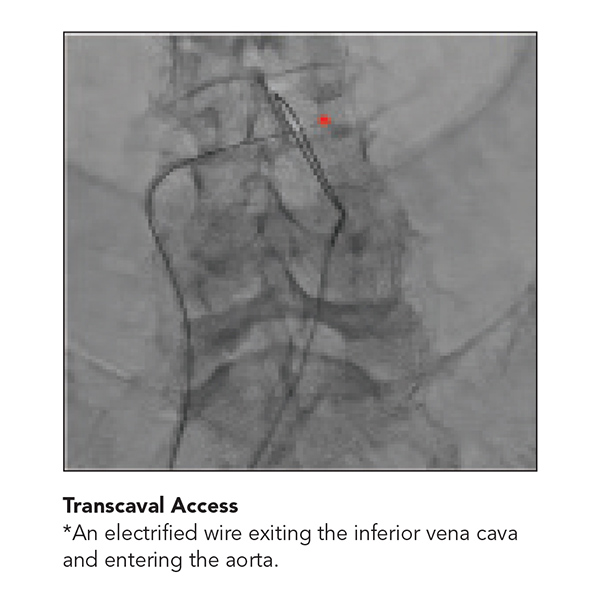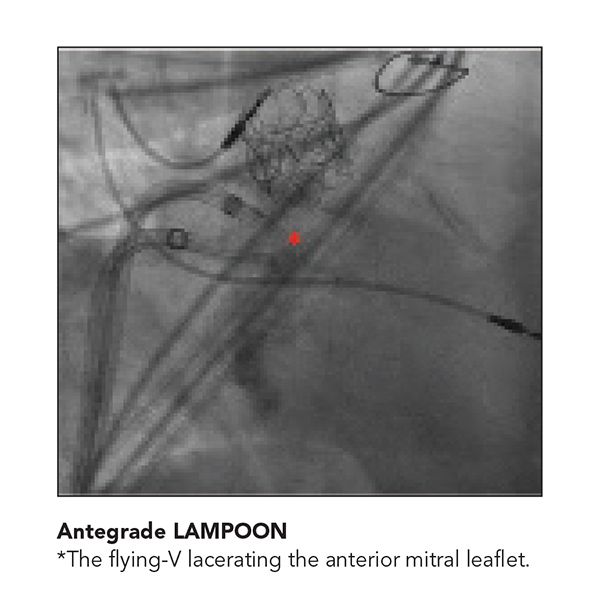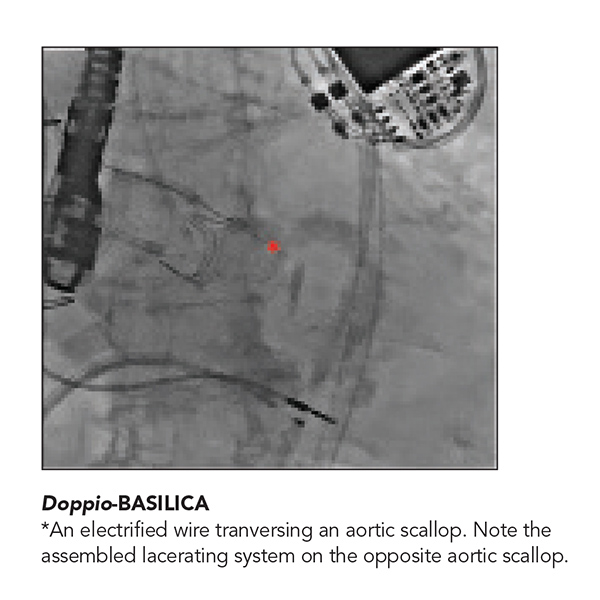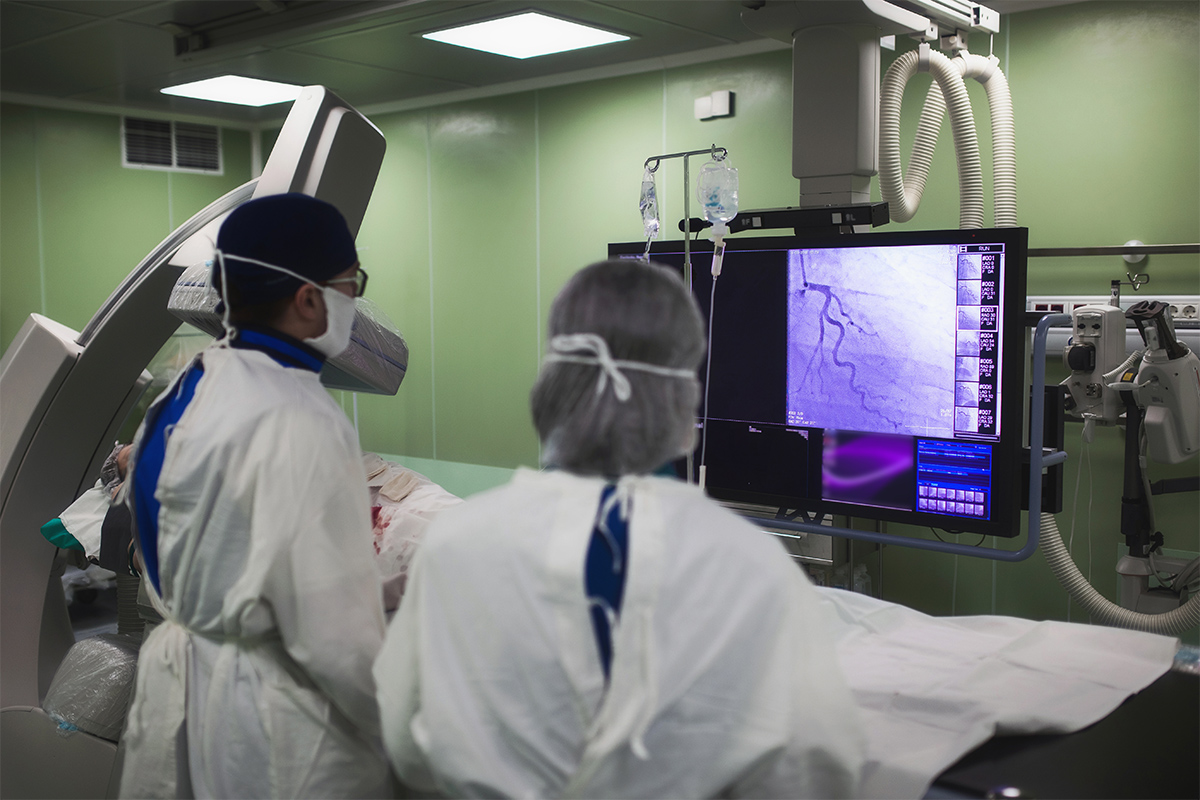Cutting-Edge Structural Interventions | Transcatheter Electrosurgery: A Review

Over the past year, it has been my privilege to write about innovations in transcatheter electrosurgery in this column on cutting-edge structural interventions.
The fundamental goal of transcatheter electrosurgery is to move conventional surgical techniques to the tip of a long guidewire.
To date, the technique has been applied to traversal from the vena-cava to the aorta (transcaval) for large bore access; laceration of the anterior mitral leaflet prior to transcatheter mitral valve implantation (TMVI) to mitigate the risk of left ventricular outflow tract (LVOT) obstruction; laceration of aortic scallops to prevent coronary obstruction (BASILICA); laceration of surgical and transcatheter mitral repairs (ELASTIC/ELASTA-Clip); traversing cardiac chambers, and traversing occluded arteries and veins.
All transcatheter electrosurgical procedures have been developed using "off-the-shelf" tools with minor modifications.
Electrosurgical techniques rely on using continuous (high voltage) alternating currents over a relatively short period of time, generated by a standard electrosurgery generator (such as ValleyLab ForceFX/A, Medtronic, Minneapolis, MN) connected to a long guidewire.
Multiple strategies are used to decrease the dispersion of current along the length of the guidewire and to focus current on the target tissue. A microcatheter is used to insulate the guidewire and concentrate current.
In cases of leaflet laceration, the focal denuding and kinking of the guidewire to create the "flying V" and infusion of nonionic 5% dextrose further concentrates charge in the tissue rather than the surrounding ionic blood.
Transcaval Access

Transcaval access is the only alternate access strategy that is fully percutaneous, femoral and not limited by diffuse iliac calcification. The technique has been used to facilitate TAVR, thoracic endovascular aortic repair, and Impella placement.
CT preplanning is a powerful tool for a successful case. Using short axis slices, operators can identify a 1 cm calcium-free zone (without overlapping bowel or vascular structures).
The diameter of the aorta is assessed at the crossing point (to determine the size of the target snare) and 2 mm above and below (to determine the size of a covered stent, if necessary for bail-out bleeding).
To facilitate traversal, a 6F renal-length internal mammary guiding catheter is advanced to the predetermined crossing point in the inferior vena cava (IVC) and directed toward the aorta.
Similar with other transcatheter electrosurgical techniques, a long guidewire (typically an Astato XS 20, Asahi Intecc, Tustin, CA) is insulated in a combination of microcathers and electrified to cross from the IVC to the aorta. Once it is snared, the Astato wire is exchanged for a Lunderquist wire (Cook Medical, Bloomington, IN) over which a hemostatic sheath is delivered.
At the conclusion of the procedure, protamine is administered to reverse systemic heparinazation. A steerable introducer (Agilis, Abbott, IL) and buddy wire are placed across the sheath, the sheath is removed and an Amplatzer Duct Occluder (ADO) (Abbott, IL) is positioned horizontally in the aorta, retracted against the aortic wall and deployed.
Transcaval access is the only alternate access strategy that has been studied in a prospective multicenter study. The major findings of the study were exceedingly positive. Of the 100 patients in the study, 99 had successful transcaval crossing, TAVR, and closing of the transcaval tract using a nondedicated closure device.
One patient could not undergo successful transcaval crossing, but did not experience any adverse events during the procedure. Of the 99 patients who underwent transcaval crossing, only one patient required primary aortic closure with an endograft. A dedicated transcaval closure device has been designed and tested with 100% closure of the transcaval tract by 30 days.1
LAMPOON

LVOT obstruction is a feared complication following TMVI – with an associated 62% in-hospital mortality. CT modeling of a virtual transcatheter heart valve in the mitral position allows for obstruction risk assessment.
Patients with a predicted LVOT of <200 mm2 (or an area <150 mm2 at the level of the fabric valve skirt) are deemed to be at high risk for LVOT obstruction. These patients are often deemed ineligible for TMVI.
Intentional laceration of the anterior mitral leaflet to prevalent LVOT (LAMPOON) is a transcatheter electrosurgical technique to decrease this risk. By moving surgery to the tip of a guidewire, the anterior mitral leaflet can be traversed and lacerated.
Following laceration and TMVI, the anterior mitral leaflet will splay "open," allowing for blood flow through the open struts of a balloon expandable valve (SAPIEN 3, Edwards Lifesciences, Irvine, CA).
In its original form, two transfemoral guide catheters were advanced retrograde through the aortic valve. One catheter was placed in the LVOT and the other was advanced into the left atrium.
Similar with other electrosurgical procedures, an Astato XS 20 wire is insulated in a polymer jacket (Piggback Wire Converter, Teleflex, NC), advanced through the LVOT catheter to the anterior mitral leaflet and electrified to facilitate traversal. This wire is then snared, externalized and the flying-V is created.
Once the flying-V is positioned on the anterior mitral leaflet, the wire loop is electrified and laceration is performed. The LAMPOON IDE trial prospectively studied 30 patients at prohibitive risk of LVOT obstruction.
The technique successfully enabled TMVI – 97% of patients were discharged with an LVOT gradient <30 mm Hg and 93% survival to discharge.2 Despite these results, LAMPOON was not widely adopted because of the complexity of the technique.
Recently, an antegrade modification was designed and tested in an animal model. Following successful completion of the animal work, the technique was performed on a compassionate use basis in eight patients.
Rather than placing two catheters retrograde across the aortic valve, two Nagare steerable sheaths (Terumo Interventional Systems, Somerset, NJ) are advanced through a single transseptal crossing into the left atrium.
Guiding catheters are advanced through these sheaths and facilitate anterior mitral leaflet traversal and laceration. Compared with the LAMPOON IDE, the overall procedure time was shorter with similar clinical outcomes.
Full details will be available soon in an article published in Circulation: Cardiovascular Interventions.
There is now a family of LAMPOON-related techniques that allow for leaflet laceration without traversal. In these cases, the flying-V is placed at the tip of the anterior mitral leaflet and pulled back to a protected annulus (either a mitral ring or prior surgical valve).3
A "rescue LAMPOON" variant uses a similar technique to treat LVOT obstruction following TMVI in a previously placed surgical ring.4
BASILICA

Coronary obstruction remains a rare but devastating complication of TAVR. The BASILICA (bioprosthetic or native aortic scallop laceration to prevent iatrogenic coronary artery obstruction) technique is a modification of LAMPOON principles, applied to the aortic valve. CT remains a powerful tool to evaluate coronary obstruction risk.
A virtual valve is modeled in the predicted final implant position. Patients at predicted high risk of coronary obstruction (low coronary artery heights, valve to coronary distance <4 mm, long aortic valve leaflets, narrow Sinus of Valsalva diameters, and prior surgical aortic valve replacement with externally mounted leaflets) are candidates to undergo BASILICA.
An Astato wire, insulated by a Piggyback microcatheter, is advanced through a guiding catheter positioned at the base of the target aortic scallop. The wire is electrified, snared in the LVOT and externalized.
The flying-V is created and positioned in the target aortic scallop. The wire is then electrified at a 70 W "pure-cut" mode, dextrose is infused, and laceration is performed by a gentle pulling force. Once lacerated, the leaflets continue to coapt, allowing for methodical TAVR.
Like other transcatheter electrosurgical techniques, BASILICA was studied in a 30 patient IDE trial. Results were again encouraging with 93% of patients undergoing TAVR without coronary obstruction or reintervention.5
The procedure now has been performed more than 250 times worldwide. An international registry is underway.
ELASTIC
The ELASTIC (Electrosurgical Laceration of Alfieri STItCh) technique is a modification of LAMPOON that allows for liberation of a surgical stitch.
First, a guiding catheter is advanced through each orifice of the mitral valve. A guidewire is advanced through one of the catheters and a snare through the other. The guidewire is snared – creating a wire loop.
ELASTA-CLIP
This loop is positioned adjacent to the suture and electrified to perform laceration. Following this, TMVI-in-ring is performed in the standard fashion.6
Residual or recurrent severe mitral regurgitation following transcatheter mitral valve repair represents a challenging clinical scenario – often leaving patients labeled as having no options.
Drawing from the success of the ELASTIC procedure, the Emory Structural Heart and Valve Center, in conjunction with colleagues at the National Heart, Lung, and Blood Institute, developed a novel transcatheter electrosurgical procedure to treat these patients.
A compassionate use study was designed, in collaboration with Abbot, with planned electrosurgical laceration of the MitraClip followed by implantation of the Tendyne valve.
In this approach, the flying-V is positioned on the anterior mitral leaflet near the attachment point of the MitraClip(s). Laceration is performed similarly to other transcatheter electrosurgical procedures: infusing nonionic 5% dextrose through the guiders, electrifying the flying-V at 70 W and pulling the guiding-catheter wire system into the left atrium.
Following liberation of the MitraClip(s), the Tendyne bioprosthesis is implanted transapically.7 The technique has been performed in five patients.

Positive preliminary findings were presented at TCT 2019 – 100% procedural success, 100% survival to 30 days, and no evidence of significant valve dysfunction or erosion from the previously placed MitraClip(s).
Further study is warranted with the relatively recent commercial approval of the Tendyne valve in Europe.
Conclusion
Transcatheter electrosurgery enables treatment for patients who are considered to not have any options otherwise. Dedicated devices may decrease procedure complexity and time.
The future appears to be – burning bright!
References
- Greenbaum AB, Babaliaros VC, Chen MY, et al. J Am Coll Cardiol 2017;69:511-21.
- Khan JM, Babaliaros VC, Greenbaum AB, et al. J Am Coll Cardiol 2019;73:2521-34.
- Case BC, Khan JM, Satler LF, et al. JACC Cardiovasc Interv 2020;13:1126-28.
- Khan JM, Trivedi U, Gomes A, et al. JACC Cardiovasc Interv 2019;12:1283-4.
- Khan JM, Greenbaum AB, Babaliaros VC, et al. JACC Cardiovasc Interv 2019;12:1240-52.
- Khan JM, Lederman RJ, Sanon S, et al. JACC Cardiovasc Interv 2018;11:808-11.
- Khan JM, Rogers T, Greenbaum AB, et al. J Am Coll Cardiol 2020;75:1455-70.
Clinical Topics: Cardiac Surgery, Invasive Cardiovascular Angiography and Intervention, Valvular Heart Disease, Aortic Surgery, Cardiac Surgery and VHD, Interventions and Structural Heart Disease, Mitral Regurgitation
Keywords: ACC Publications, Cardiology Magazine, Mitral Valve, Aortic Valve, Bioprosthesis, Mitral Valve Insufficiency, Coronary Vessels, Transcatheter Aortic Valve Replacement, Lacerations, Compassionate Use Trials, Glucose, Electrosurgery, Sinus of Valsalva, Heart Valve Prosthesis, Coronary Occlusion, Aorta, Sutures, Vena Cava, Inferior, Patient Discharge, Hospital Mortality, Polymers, Prospective Studies, Goals, Venae Cavae
< Back to Listings


